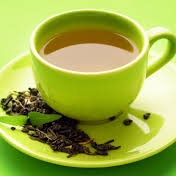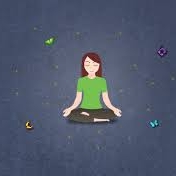One of root causes of so many common ailments and diseases is poor digestive health. Different people suffer from poor gut health for different reasons, but there are some explanations that are quite common and in some cases, preventable. In my work with clients, I always ask some preliminary questions – and the answers often reveal some basic and important things that these clients never even noticed about themselves. Some clients realize for the first time that they are dehydrated. Others realize that eating on the go is making them sick. These preliminary questions help so many people feel much better very quickly. Along those lines, I will dive into the basics of good digestion for the first few posts and then get more nuanced as the weeks progress. No matter where you fall on the continuum, I hope you learn just one new thing about your digestive health. As always, please feel free to comment or ask questions.
GOOD DIGESTIVE HEALTH Post #1
Eat with intention: Good Digestion starts in the brain
One of my favorite things about Winter is walking into the house and delighting in the deep aromas of thyme and rosemary, perhaps a savory broth or something charred and flavorful; I know there is a delicious (and usually nutritious) meal waiting for me. I am lucky, my husband, like me, loves to cook and enjoys creating in the kitchen. I take a wiff and ingest the steam and smoke that escapes the pot in preparation for what I know will be a scrumptious meal.
At this point, my body is already preparing for dinner. Each smell sends a signal to my brain that I am going to eat- very soon. This message gets relayed to my salivary glands, food is coming! I then sit down, take a deep breath, look at the gorgeous table in gratitude, and on some occasions, I even bless my food. These rituals, passed down through generations dating back to old sages, religious figures, tribal leaders and the like, can be very spiritual. For some folks, they are based in religious observance. For others, it is an exercise in mindfulness. But no matter the origin of what inspired you to pause, these actions actually help the body begin the digestion process. When I eventually take my fork to my mouth and take my first bite, everything is online. I begin to chew and bam, out comes the requisite saliva necessary for the proper breakdown of food- that food and saliva have now combined into a bolus. That bolus eventually goes into the stomach where acid breaks it down so that the nutrients in our food can be absorbed in our small intestines. This critical step is the basis for good digestion and good health- if our food doesn’t break down in the stomach none of the other important steps of digestion and elimination will work.
So, how do we prevent poor digestion if we don’t cook or have someone to cook homemade meals for us? We are busy, we eat on the go – in the car, while we walk, at our desks. We often eat for sustenance, when we realize we are hungry. Or the opposite, when we are bored and are emotionally eating. In both of those circumstances, we are less likely to be mindful about what we are doing. We lack ritual and forgo the smelling, the looking, the salivating- we dive right in before our brain has activated the digestion process. When this happens, our enzymes do not release, we don’t properly break down our food and myriad problems may arise. So how do people on the go let their bodies fully prepare for digestion?
The old sages were onto something. Indeed, nearly every religion has some sort of grace or blessing prior to eating. Perhaps it is because we eat at least three times daily and it is a constant way to connect to the divine. Maybe it gives us pause for gratitude that we live with abundance and can afford to eat. Perhaps it serves as a way to get us ready for the spiritual practice of eating – especially if it is something grown from the earth. All of these things might be true. But it definitely is true that eating with intention and readying the body to eat serves the practical and physiological purpose of triggering digestion before we even bring food to our lips.
So next time, think twice before you shove something into your mouth while you’re looking at your computer, driving your car or walking to your next meeting. Give yourself just a few moments of readiness before you eat and see if you can feel the difference.





